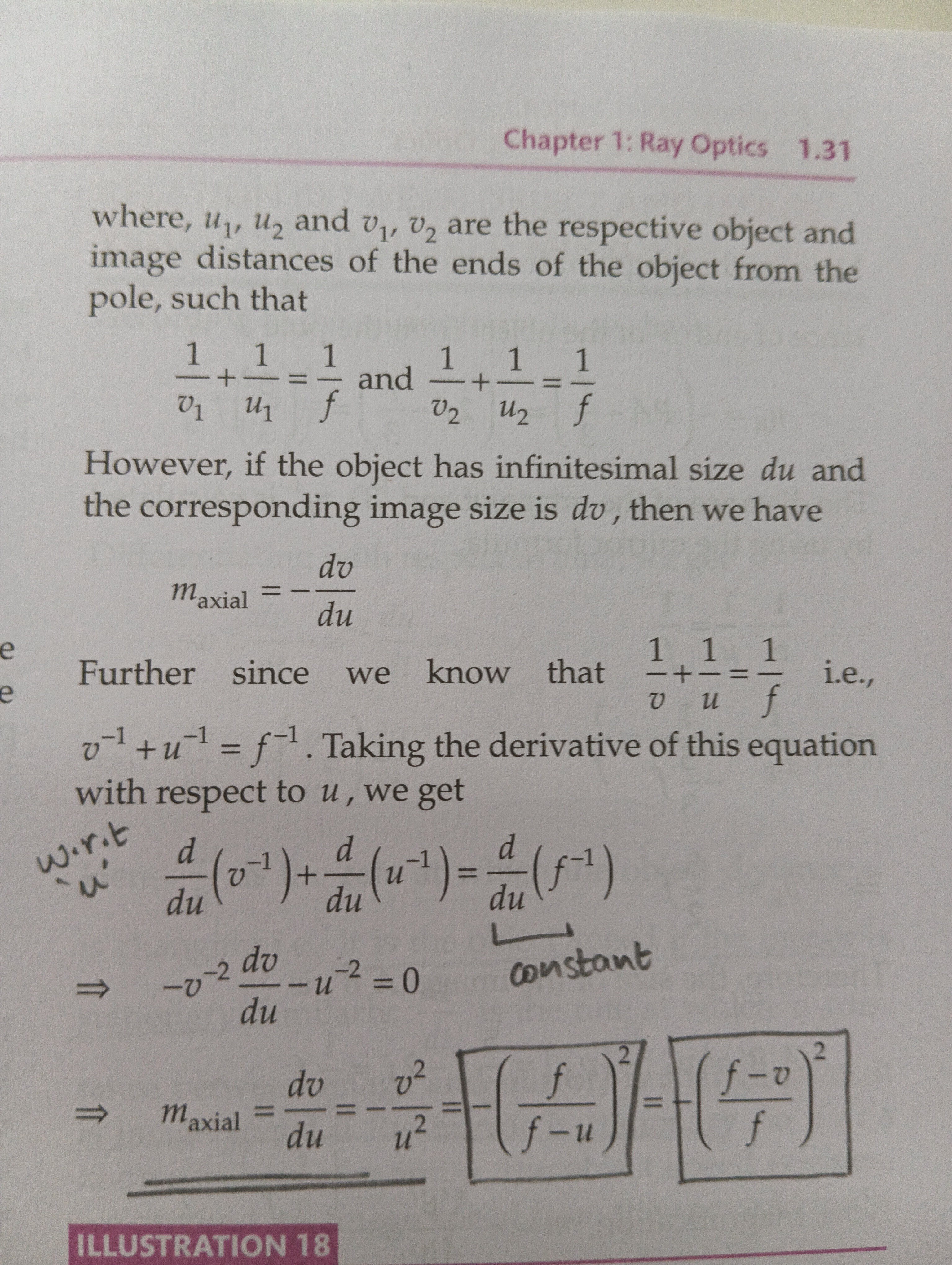Question
Question: where, $u_1$, $u_2$ and $v_1$, $v_2$ are the respective object and image distances of the ends of th...
where, u1, u2 and v1, v2 are the respective object and image distances of the ends of the object from the pole, such that v11+u11=f1 and v21+u21=f1
However, if the object has infinitesimal size du and the corresponding image size is dv, then we have
maxial=−dudv
Further since we know that v1+u1=f1 i.e., v−1+u−1=f−1. Taking the derivative of this equation with respect to u, we get
dud(v−1)+dud(u−1)=dud(f−1)
⇒−v−2dudv−u−2=0
⇒maxial=dudv=−u2v2=−(f−uf)2=−(ff−v)2
ILLUSTRATION 18

The provided text is an illustration explaining the concept and derivation of axial magnification for an infinitesimal object using the mirror formula and differentiation. It derives the relationship dv/du=−v2/u2. Based on the definition maxial=−dv/du, the axial magnification is maxial=v2/u2. This is equal to the square of the transverse magnification, i.e., maxial=mt2. The formulas provided at the end of the illustration, maxial=−(f−uf)2=−(ff−v)2, likely contain a sign error based on the definition and derivation within the text; the correct formulas for maxial=v2/u2 should have a positive sign outside the square.
Solution
The text derives the axial magnification for an infinitesimal object using differentiation of the mirror formula. Starting from 1/v+1/u=1/f, differentiation with respect to u yields dv/du=−v2/u2. If axial magnification is defined as maxial=−dv/du, then maxial=v2/u2. This is equal to the square of the transverse magnification mt=−v/u. The formulas for maxial in terms of f and u or f and v are derived by substituting the expressions for v/u from the mirror formula into maxial=(v/u)2. The final formulas presented in the text contain an extraneous negative sign. The magnitude of axial magnification is (v/u)2=(f/(u−f))2=((v−f)/f)2. The negative sign in dv/du indicates axial inversion.
